|
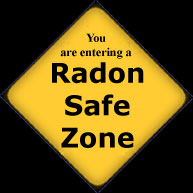 The
Solution The
Solution
The
"will" to test
Education is probably the best way to overcome the inertia of
not wanting to deal with radon. Read the EPA guides, review
the web sites in the Connections section. Knowledge is King.
The more you know about the risks, the more likely you will
take action.
Action
without panic
Our goal, at Radon at Tahoe, is
to get everyone at Tahoe to test their house for radon
and then fix it if it's high. And now, thanks to the internet and specifically Amazon, we're reaching a wider audience, so the goal now expands to beyond Tahoe. The question is: How do we move
the bar of awareness to get people to act without causing undue
worry or panic? Hopefully, many of us will have no radon no problem. So why risk getting everyone
upset? Well, it takes getting concerned enough
to test to find the ones with the problem. Who of us would deny
those folks a solution that only testing will find? And what's
the cost? The test is cheap ($7 from California, free from some county programs and $12 to $20 at local hardware stores). Of course, if you want the benefit
of a continuous monitor to test your house over time and then
help your friends and neighbors test theirs, you can buy a continuous
radon monitor. Either way don't panic, take action. Take
the Test.
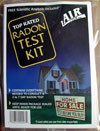
Test
kit
Radon test kits cost $5 to $20.
The price includes the cost of having a laboratory analyze the
test. More expensive types of radon tests are also available;
some of these are do-it-yourself kits, and some are used mainly
by professional radon testers.
If
you cannot find a radon test kit in your community, you can
order a low cost test kit from the National Radon Hotline by
calling 1-800-SOS-RADON [1-800-767-7236].
If
you are a California resident, you can get a
$7
test kit from the California Department of
Health Services. Local hardware stores and home
improvement stores are now carrying them.
To
use the kit, follow the instructions and set it in a low-traffic,
low ventilation part of your house for 3 days. You then reseal
the kit and send it in to a laboratory which analyzes the kit
and sends you the findings in a few weeks.
 Continuous
Radon detector Continuous
Radon detector
I
like the convenience of a continuous radon tester. It comes
with a price tag of $129.95, but it has many advantages over the
charcoal radon test kit above. The Pro
Series 3 Radon Detector meets EPA required performance criteria to accurately
and
precisely
measure radon. It performs continuous radon monitoring.
Displays readings to the tenth of a pCl and has warning signals
for both short and long term settings. . It takes
hourly readings and displays short and long term readings. It
provides an audible alarm if the long term levels exceed 4 pCi/L
(4 pico-Curies per liter). These units have an accuracy of +/-
20%, which is better than the EPA required +/-25% of even some
professional units. I like this type of unit for the homeowner
because you can see if you have a problem in a few days and
you can monitor the results of your mitigation efforts over
time. With this unit you can even be a good neighbor and help
your friends and neighbors test their homes for radon.
Order this unit now.
Professional
Testing
Certified radon testers are available in Sacramento and Carson
City who will come up to Tahoe for between $100 and $250 for
travel expense and $250 to test a house. They use expensive
and sophisticated monitors that detect slight changes in pressure
to avoid fraudulent tampering with the test. You can view a
list of certified testers in California at the National Environmental
Health Association - http://www.radongas.org/measurement/CA.html
See the Connections page for a list of local radon testers and
mitigators that I have found.
If
you use a professional radon tester in California, make sure
they have the proper training and certification. California
law (HEALTH AND SAFETY CODE SECTION 106750-106795) requires
that all radon service providers in California be certified
by one of the two certification agencies approved by DHS. The
law carries up to $1000 fine for each infraction.
Do
it yourself mitigation
If
you test and find you have high levels of radon (4pCi/L or higher)
you may want to try mitigating the problem yourself. Now that
radon products are available on the Internet, it's not that
difficult or expensive, though it is quite a dirty job, crawling
around in the crawl space under your house. With the help of
a friend or hired hand you can probably get the job done in
a few days. (See the Do It Yourself section for details on one
type of application. Books are available in the Links section).
The benefit is you are in control, the costs are under $1000
(at least they were in my case), you can get it done on your
time schedule, and with a continuous radon detection device,
you can monitor the results. The downside is that it's another
project to add to your long list, you get dirty, and it takes
hard work. As a home owner, you can hire some of the work out
to paid workers, but you have to monitor the work if they are
not certified mitigators. A poorly installed job will leak radon
back into your house and you will be no better off than before..
Also, you have to watch for scams. There are many unscrupulous
home repair people out there who see a hot market and an unaware
home owner as an easy mark.
Professional
mitigation
I wish I could be more helpful here, but my research to date
has turned up no certified mitigators in the Tahoe area and
only two in the entire state! See the Connections page to view
the testers and mitigators that I have found. If you use the
links and discover more, please let me know so I can post it
here. Of course, all the government organizations from federal
to state to county to city all recommend using certified professionals,
but there are not many out there. That is why this web page
dedicated to self awareness and self responsibility, because
there are not too many other choices at this time. If you do
use a professional, California law requires that all "radon
service providers" possess certification from either the
National Environmental Health Association (NEHA)
http://www.neha.org or National
Radon Safety Board (NSRB) http://www.nrsb.org
.
Just try finding one! For any contractors out there who want
to get certified, these organizations can point you to training
providers. The closest one to us is in Colorado.
Real
estate sales
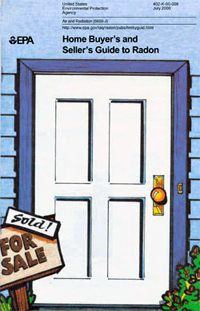 Real Estate professionals: Visit the Real Estate page to view suggestions for developing a Radon Strategy. To
better understand the radon issues involved in real estate transaction,
read this booklet by the Environmental Protection Agency:
Home Buyer's and Seller's Guide to Radon. Real Estate professionals: Visit the Real Estate page to view suggestions for developing a Radon Strategy. To
better understand the radon issues involved in real estate transaction,
read this booklet by the Environmental Protection Agency:
Home Buyer's and Seller's Guide to Radon.
For
real estate transactions, you should use the services of a certified
radon tester to get unbiased, properly performed radon testing
and report. The real estate industry could have a real impact
on eliminating radon gas in all homes sold, as more agents recommend
that their clients test for radon prior to the sale. California
law can levy a $1000 fine on any radon service provider
that is not certified to do radon services in the state.
We
have to find ways to get the real estate professionals on the
side of testing and away from the fear of radon as a "deal
killer." The Colorado brochure,
Dealing
with RADON in Real Estate Transaction, and
video, below, is a step in educating buyers, sellers and agents
that radon testing and mitigating is not something to avoid,
but just another step to getting a new buyer into a health home.
California and Nevada should produce and distribute a similar
booklet.
One Real Estate Agent's Story
Dennie Edwards, Elyria, OH
"In April of 2004, I had a very bad cold, so my doctor
performed a chest x-ray to check for pneumonia. I've never smoked,
so you can imagine how shocked I was that he found a 4.5 centimeter
mass in my left lung.
Even though I've been a real estate agent for 31 years, I had
never bothered to test my house for radon. I always informed
my clients that radon testing prior to purchase was an option
(to protect my liability), but truthfully, I really didn't care
if they tested or not.
Now I had to wonder whether my lung cancer had been caused by
radon exposure. While the doctor scheduled my surgery, I scheduled
a radon test. The result was 10 pCi/l, (two and a half times
the EPA's recommended Action Level). I had lived in the home
for 12 years. Needless to say, I called a contractor to have
a mitigation system installed.
Two days later I had surgery. I thought I was surely going to
die. When I woke up choking with tubes in my throat, panic set
in. They had removed my entire left lung. I'm getting better.
I can walk up to a mile. But, I can no longer dance, lift things,
or exert myself.
My
clients now get a very personal testimonial about the importance
of testing for radon."
This
story was excerpted from the Cancer Survivors Against Radon
(CANSAR) web page at http://www.cansar.org
.
HUD
Steps up to the Plate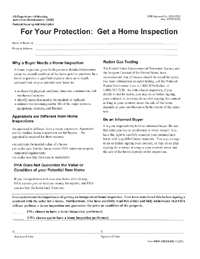
HUD (U.S. Department of Housing and Urban Development) has recently
revised its "For Your Protection: Get a Home Inspection"
form to include a radon test as part of a home inspection. (Click
on the form to view the PDF
file) HUD is not requiring a radon test for FHA insurance
(this would have been a much more powerful mandate), but it
does mandate the use of this form for all FHA loans. Radon scientists
have been working for 13 years to get HUD to address radon testing.
The large federal home lending organizations, Fannie Mae and
Freddy Mac, have yet to require radon testing as the do with
termite testing.
To read more on this go to The
American Radon Policy Coalition (ARPC) from which the following
quote was taken:
"WHAT
THE NEW HUD MORTGAGEE
NOTICES MEAN TO REAL ESTATE AGENTS
The obvious ramification is agents may be even more liable for
persuading the buyer from performing a radon test because, “we
don’t have any radon in this neighborhood,” or “this
house doesn’t have a basement” or whatever excuse
they can provide to avoid a perceived hurdle to closing the
deal. HUD is requiring their Form to be signed and dated prior
to the contract being signed and clearly recommends that all
houses be tested for radon."
 Radon
Guide for Tenants Radon
Guide for Tenants
To really understand the radon issues involved in renting, read
and print this booklet by the Environmental Protection Agency:A
Radon Guide for Tenants. Tenants
should do their own testing and not wait for the property owner
to get around to it. If the results are above 4 pCi/L they should
show the results to the property owner and request mitigation
measures. Given the severity of the problem, and as pressure
mounts, property owner associations will hopefully provide their
members with guidelines for mitigating apartment buildings and
residential rental properties. However tenants will have to
be proactive here. Because of the costs of testing, mitigation
and possible litigation, some property owners may have been
hoping the issue would remain as hidden as the radon itself:
"invisible, odorless and tasteless".
 Radon in Rental Housing Radon in Rental Housing
Environmental Law Institute
Radon in Rental Housing: Legal and Policy Strategies for Reducing Health Risks
Initiatives targeted at reducing exposure to high radon levels in rental housing
1994, $18
http://www.elistore.org/reports_detail.asp?ID=343
Funds may be available to reduce high radon levels in rental housing
There are some federal programs that might be used to help fund radon reduction in homes that are affordable to limited income families. These programs generally give money to local agencies or groups, which then fund the work. Some examples are:
Community Development Block Grant (CDBG) program - funds rehabilitation and repair of affordable housing. For more information, call the U.S. Department of Housing and Urban Development (HUD) at (202) 708-3587.
"203k" program - funds rehabilitation and repair of single family homes. For more information, call HUD at (202) 708-2121.
Environmental Justice Grants - funds community-based organizations and tribal governments addressing environmental concerns of people of color and low income communities. For more information, call EPA's Office of Environmental Justice at (800) 962-6215.
Dealing
with RADON in Real Estate Transactions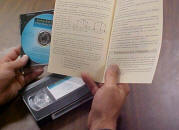
The Colorado Department of Public Health and Environment and
CERTI, have
produced two resources that explain radon in a manner that is
designed not to scare people. Yes, radon is an issue, but is
one that need not delay a closing. In fact, on the front cover
of the brochure, it boldly says: "If you like the house,
buy it - radon can be reduced." " Until California
and Nevada produce similar material with references to our region,
this brochure and video are a good complement to completing
any real estate transaction involving radon. For
a free PDF copy of the brochure, click here.
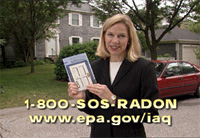 Breathing
Easy: What Home Buyers and Sellers Should Know About Radon Breathing
Easy: What Home Buyers and Sellers Should Know About Radon
This video satisfies a long-standing need for a short visual
educational tool on how to best include radon in residential
real estate transactions. With a bit of light humor, the video
covers the basics, including radon science, the lung cancer
risk, home inspection, building a new home radon-resistant,
testing and fixing a home, disclosure, state radon offices,
hotline and web resources, and key radon numbers, e.g., EPA's
action level and the US indoor and outdoor averages.
The
primary audiences are home buyers and sellers, and real estate
sales agents and brokers. Home inspectors, mortgage lenders,
other real estate practitioners, and radon services providers
will also find the video helpful. Single copies of the video
are free from IAQ-Info (1-800-438-4318) in VHS, CD and DVD formats
[ask for (EPA 402-V-02-003) (TRT 13.10)].
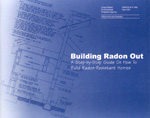 Radon
Resistant New Construction (RRNC) Radon
Resistant New Construction (RRNC)
As with most things, it's cheaper and easier to install radon
mitigation systems when a house is being built, rather than
to retrofit an existing house. Average cost added during construction:
$500. Average cost after construction: $1,200 to $2,500. Why
don't we see it more often? I think the answer is lack of awareness.
Once consumer demand it, builders will offer it. This comprehensive
85 page manual, Building
Radon Out: A Step-by-Step Guide on How to Build Radon-Resistant
Homes, is aimed at the construction trade. It is available
form the EPA publication web site. Give one to your local building
department. They need to get on board. EPA's
page on RRNC. Or download the pdf file and print it yourself, 8MB.
Build Radon Out Flyers
In the Spring of 2008, in an effort to educate and persuade more contractors to use RRNC (Radon Resistant New Construction) methods in the Angora Fire area, Radon At Tahoe distributed a Build Radon Out flyer to all building sites. The flyer is also available in the El Dorado County and City of South Lake Tahoe Building Departments. One side of the flyer is an EPA Building Radon Out poster. (This is the same poster we hope to place in the El Dorado County Building Department. More on that later). The other side lists the building requirements for RRNC and encourages builders to either hire the process out to a certified radon mitigator, or to read the books and do it themselves. Read the flyer .

How
Many Homes Are Built With Radon-Reducing Features?
Not many! Certainly not nearly enough. Based on the most recent
analysis of annual home builder survey conducted by the National
Association of Home Builders (NAHB) Research Center:
Only
5.8% of approximately 1,124,000 single-family detached homes
built during 2001 incorporated radon-reducing features, which
translates to about 65,000 homes. This brings the cumulative
total of single-family detached homes built with radon-reducing
features since 1990 to over one million homes. How many homes
do you think we have in this county? Over 100 million? That's
one percent or less! That's deplorable.
Only
11.7% of approximately 255,000 single-family detached homes
built in Zone 1 (homes with high radon potential) during 2001
incorporated radon-reducing features, which translates to nearly
30,000 homes. This brings the cumulative total of single-family
detached homes built in Zone 1 with radon-reducing features
since 1990 to over 600,000 thousand.* What about the other 225,000
homes built in Zone 1? How many of those folks will get lung
cancer because their builder or building department was too
busy with other things to protect their client's health? The
National Association of Home Builders (NAHB) has a responsibility
to use safe building practices and policies. They need to do
a better job.
*
These results exclude homes built on pier-style foundations.
Minnesota
Health Department Takes the Lead
County and city building departments tend not make changes to
the building codes unless they are recommended by their state
health departments. Many state health departments are starting
to agree with the EPA and Surgeon General that all houses be
tested for radon. The Minnesota
Department of Health now recommends that ALL new houses
should be built with Radon Resistant New Construction (RRNC)
features. Here is the text from the MDH web site:
MDH
recommends that all new homes in Minnesota be built to include
radon-resistant construction features that minimize radon entry
into the home and make future radon problems easier to fix should
they occur. It is more cost-effective to include radon-resistant
features when building a home rather than retrofitting an existing
home. If elevated radon levels are found after you move in,
radon-resistant features can be easily activated to become radon
reduction systems. Ask your builder if they are currently using
radon-resistant construction techniques.
All
newly built homes in Minnesota should be tested for radon after
they are completed and occupied. Early detection of elevated
radon levels can help protect the homeowner's financial interests
if the radon problem is due to construction problems and can
allow the homeowner to take appropriate actions to lower the
radon level and protect the health of their family.
International
Residential Code
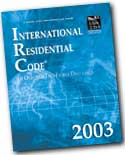 The IRC
is the code book that most building departments use to draft
their own building codes. The IRC for 2003 includes Radon Control
Methods in Appendix F. Getting local
building departments to adopt Appendix F in their codes or at
least in their recommendations, has not been an easy task!
Nevada is a non-regulatory state, meaning that they don't require
radon certification for radon service providers. California
is a regulatory state. However neither California nor Nevada
building departments require or recommend that houses be tested
for radon (as the EPA recommends) or that RRNC be used on new
construction in Zone 1 (counties with very high radon levels),
as state health departments are starting to recommend.. It is
our goal to get this changed. The IRC
is the code book that most building departments use to draft
their own building codes. The IRC for 2003 includes Radon Control
Methods in Appendix F. Getting local
building departments to adopt Appendix F in their codes or at
least in their recommendations, has not been an easy task!
Nevada is a non-regulatory state, meaning that they don't require
radon certification for radon service providers. California
is a regulatory state. However neither California nor Nevada
building departments require or recommend that houses be tested
for radon (as the EPA recommends) or that RRNC be used on new
construction in Zone 1 (counties with very high radon levels),
as state health departments are starting to recommend.. It is
our goal to get this changed.
Radon
Air Purifiers
Some companies claim that HEPA air filters can be used to clean
radon daughters from the air. I have not seen the scientific
tests on this, but since radon daughters attach to dust particles,
this method may work to reduce radon where normal, and cheaper
mitigation methods fail to lower radon to the desired levels.
One such a company is: http://inspiredliving.com/airpurifiers/radon-air-purifiers.htm
Marketing
Radon Testing
We need to come up with a Madison Avenue type marketing campaign
to put radon testing on everyone's mind. Marketing sells soap,
so why not radon testing? The Marketing
Page is an attempt to get us started. You can even participate
in designing the next Great Radon Marketing Program.
Put on your thinking caps and click
here.
Training
Courses
For Radon Professionals
Radon
at Tahoe is proud to offer discounts on home
study radon courses through CERTI - Center for Environmental
Research & Technology, Inc.
 Newborn
Radon Program Newborn
Radon Program
Radon
at Tahoe is working with local area hospitals and both the California
and Nevada radon offices to offer all new mothers a free radon
test and information packet when they leave the hospital with
their new baby. This could ensure that every newborn baby has
the chance of growing up in a radon-free home. The plan was
started in Pennsylvania and has been successfully adopted in
many other states. Most funding is through EPA SIRG funds to
state radon offices, which publish the packet and monitor the
program. Read the KRNV Channel 4 Reno newsbrief on Pennsylvania
Governor Rendell's promotion of the program. We have also contacted
both California Governor Schwarzenegger's and Nevada Governor
Guinn's offices for support.
Channel
4 KRNV.com: Local News and Weather for Reno-Tahoe Region ...PA
Governor Rendell Taking New Steps to Protect Pennsylvania Families
from Radon:
Text of news
story
 Lake
Tahoe Newborn Radon Program Lake
Tahoe Newborn Radon Program
Fashioned
after the successful Pennsylvania Newborn Radon Program (including
logo and even color!), the Lake Tahoe Newborn Radon Program
now provides free radon test kit flyers for all parents of newborn
babies at Barton Memorial Hospital in South Lake Tahoe. The
green cover surrounds the Radon in California flyer provided
by the California Department of Health Services Radon Program.
The text encourages new parents to provide a clean and healthy
environment for their new child by testing their house for radon.
Free test kits are provided through the DHS Radon Program. It
is hoped that this first (to our knowledge) radon outreach to
new parents in California will be taken over and produced by
the State Radon Program as grant funds are made available.
View
grant request.
Print our initial try at a Tahoe Newborn Radon Brochure.
Radon
Fact Sheets
These
sheets were originally developed for the Green Building Expo
at Lake Tahoe Community College and have grown to include many
radon topics that make great handouts at booths and fairs. Feel
free to use them to let the public know the facts about radon
Become
a certified radon mitigator
and be part of the solution!
Radon
Certification Classes were offered in Reno on
June 5 - 8, 2006 with 13 scholarships available through Adrian
Howe of the Nevada Radon Office! You can
contact Adrian to find out when these classes will be offered
again.
|